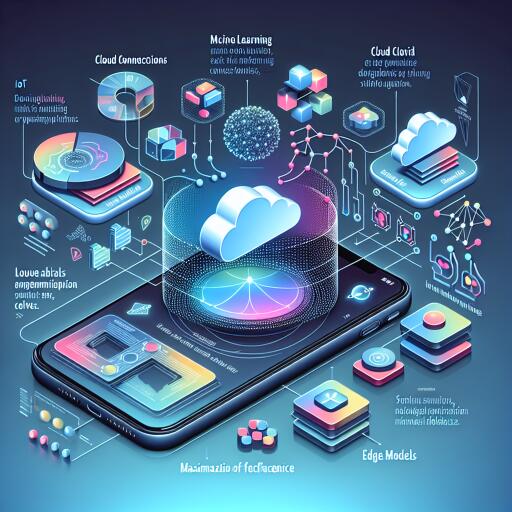Machine Learning on the Edge: Unveiling the Next Frontier in Smart Technology
The landscape of technology is continually evolving, ushering in a new era where intelligent devices are no longer a novelty but a necessity. As we advance, there’s a growing emphasis on devices that can process and analyze data locally. This push towards autonomy marks a significant shift away from traditional cloud-dependent operations to a more decentralized approach known as Machine Learning (ML) on the edge. This breakthrough development is setting the stage for devices to make smarter decisions on their own, transforming how we interact with technology on a daily basis.
Previously, the concept of Machine Learning was synonymous with powerful, centralized servers tasked with crunching numbers and analyzing large datasets. With the rising tide of mobile and Internet of Things (IoT) technologies, there’s been a seismic shift towards edge computing. This paradigm champions the use of ML models within the device itself, negating the need for constant communication with distant cloud servers. The implications of this are far-reaching, offering immediate decision-making capabilities, bolstering privacy, and minimizing dependencies on internet connectivity.
At the heart of Machine Learning on the edge is the innovative use of compact, low-power devices capable of performing tasks that were once deemed too complex for anything less than a server farm. Microcontrollers, for example, including those based on the Arm Cortex-M series, have become the unsung heroes in this technology narrative. These tiny powerhouses are now able to conduct sophisticated operations like facial recognition, predictive maintenance, and environmental sensing right where the action is. Such advancements hold tremendous promise in situations that demand swift data processing and analysis without the luxury of latency.
The essence of ML on the edge is not just about bringing computational intelligence closer to the source of data but also about redefining what’s possible in the realm of smart devices. From enhancing consumer gadgets to streamlining industrial processes, the ability to make on-device decisions is a game-changer. It enables a new class of applications where quick reflexes are critical, such as in autonomous vehicles, healthcare monitoring devices, and smart home systems, to name a few.
In conclusion, Machine Learning on the edge embodies a future where devices are not just connected but also intelligently autonomous. By shifting the focus from cloud to edge, technology is becoming more personal, private, and instantaneous. As we continue to explore this frontier, the potential for innovation is boundless, promising a world where our devices understand and respond to our needs in real-time.










